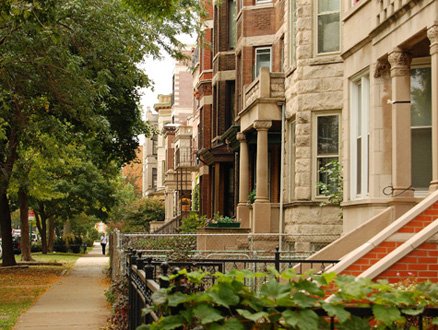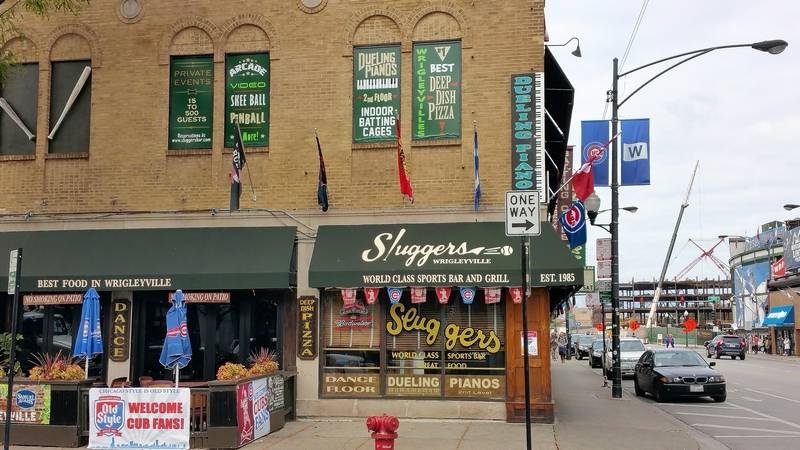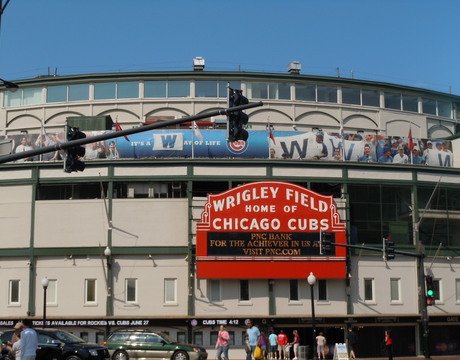Overview
Size
Wrigleyville has a population of 7,757 people according to the Social Explorer. The size of this neighborhood is 3.134 square miles as well. The neighborhood itself when talking about what is located inside of it is not very large. There are not many shopping centers or grocery stores or schools but there are a decent amount of bars and restaurants along with souvenir shops. The neighborhood is more of a sporty and festive type of community and not many families live there or are raised there.
Identity




Wrigleyville is one of the neighborhoods in Chicago with the most identity. It is a lively pocket in the Lakeview are and is home of the historic Wrigley Field, the second oldest stadium in baseball. The neighborhood is rather tame by day but a mix of the souvenir shops, eateries, and baseball games brings people from all over together at night. Its borders run from Diversey Parkway and Irving Park Road to Halsted Street and Racine Ave. It is home to rooftop bars and bleachers where people can purchase seats to watch Cubs games and near the intersection of North Clark Street and West Addison, bars line the streets to host Cubs fans.
In terms of coherence, Wrigleyville takes the cake. Sports and spirits are the backbone of the neighborhood, bringing people together from all walks of life. This neighborhood doesn’t cater to all of the shopping needs of the general public, but sports themed merchandise can be found on every corner. As for eateries, Wrigleyville boasts a wide selection of Chicago restaurants and bars taking in rowdy sports fans and are very festive in nature. There are also many restaurants in the neighborhood and the food choices have a lot of diversity to cater to a wide range of people.
Wrigleyville was once a working class neighborhood called Lakeview so its culture is taken a lot from the community built around Wrigley Field. This field creates a community feeling among itself. The borders of the neighborhood are not extremely strong so I would say the neighborhood is more of a makeup of many smaller neighborhoods but is now one big community strongly centered around sports. The people who live in Wrigleyville are very connected in many different ways. The Cubs is the main factor that creates the bond within the community and sports play a large role in the creation of Wrigleyville itself.
Although there is not much shopping in the neighborhood, it has a place for everyone. From the sports retail stores to the bars to the different restaurants, Wrigleyville can be home to a variety of different people. There are so many different places to go within the community and it has a very welcoming environment for people who are not from the city. Wrigleyville was driven into public view in the late 1980’s and has become a popular site ever since.
History
Lakeview, now commonly known as Wrigleyville, had its first permanent structure built in 1853 by James Rees and Elisha Hundley. It was an incorporated Illinois civil township with a charter granted by the Illinois General Assembly. The neighborhood around Wrigley Field was a working class community and the balloon-frame houses of the neighborhood contained mostly two and three flats filled with people who worked nearby in factories.
Wrigleyville was given its name when the Wrigley Field opened in 1914. Throughout its history, Wrigley has been a home for many different kinds of people. Its rich background gives the community strong ties and creates a very friendly culture. The culture in Wrigleyville is for everyone and it has been pushed into the public eye when the field opened.
The neighborhood originated out of a district settlement and was once home to Native American tribes. Starting as a working class neighborhood, the sport themed, festive town became as it is now after the opening of Wrigley Field. One cannot broadly characterize the different time periods of development. The neighborhood was not necessarily planned because it was mostly just based around the building of Wrigley Field.





Social Mix
Total Population
7,757 people
2,470 per square mile
Race/Ethnicity
White
84%
Black
2%
Hispanic
7%
Asian
5%
Other
4%
Age
<10
7%
10-17
1%
18-24
23%
25-34
12%
45-54
6%
55-64
4%
65+
7%
Education Levels
Master’s degree o higher
26%
Bachelor’s degree
53%
Some college
29%
High school diploma
28%
Less than high school
13%
Housing Type
Family Household
26.5%
Non-family household
73.5%
Housing Tenure
Rented
77.4%
Owned
32.6%
Housing Value
0-149,999
3.2%
150,000-499,999
32.9%
500,000-999,999
33.4%
1,000,000>
30.5%
Wrigleyville
North Side Region
Chicago
Age
3.78
4.03
3.90
Race
1.22
1.47
1.87
Education
3.12
3.44
3.41
The neighborhood of Wrigleyville falls in the typical "north side" category when it comes to race being highly non-diverse compared to the entire city of Chicago. This neighborhood is predominantly white and therefore lacks diversity when compared to the entire city and also its own region. Wrigleyville, however, is highly diverse when it comes to age with a high number of ages ranging from 18 to 34. In terms of age the neighborhood compared to the rest of the city, however, it is not very diverse because a high proportion of people living here are in their early twenties to late thirties.
When it comes to education, the city is pretty diverse. It has a very similar number of people with master's as it does people with high school level education. Compared to the rest of the city and the region, the results are very similar. People in Wrigleyville may not be very divers in age or race but their education levels vary greatly.
Sources: Social explorer for all demographic information